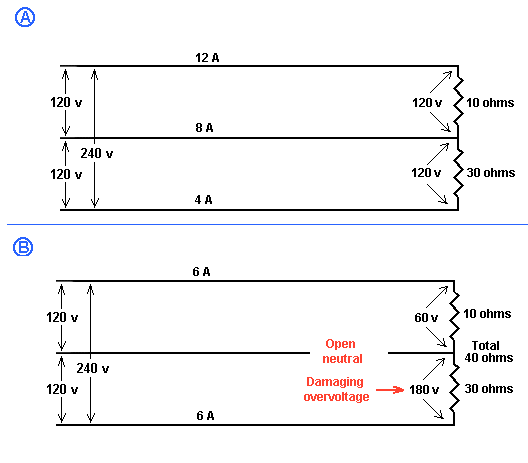While working on replacing receptacles in a dormitory hallway I noticed the fan that was plugged
into the receptacle downstream started to spin very fast when I broke the splice of the neutral.
I had to work on these live because some of the circuits were tied into rooms that were occupied.
the voltage with the neutrals together was 119v, neutrals separated it jumped to 158v.
This is an old building built in the 40's, so I know some of the wiring isn't up to par.
Im the first licensed electrician on campus and I've noticed panels packed full of wires.
What would cause that voltage to jump like that? Any thoughts?
into the receptacle downstream started to spin very fast when I broke the splice of the neutral.
I had to work on these live because some of the circuits were tied into rooms that were occupied.
the voltage with the neutrals together was 119v, neutrals separated it jumped to 158v.
This is an old building built in the 40's, so I know some of the wiring isn't up to par.
Im the first licensed electrician on campus and I've noticed panels packed full of wires.
What would cause that voltage to jump like that? Any thoughts?



